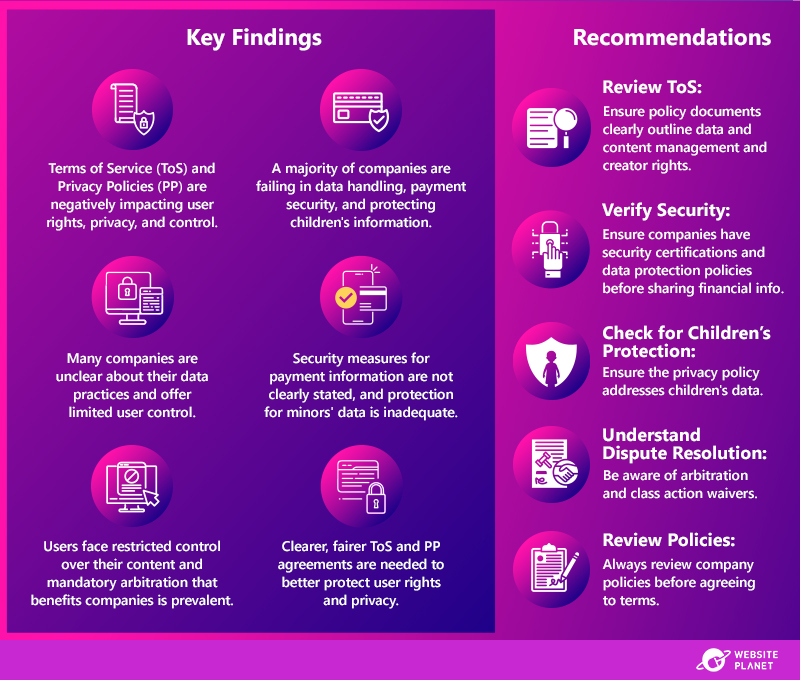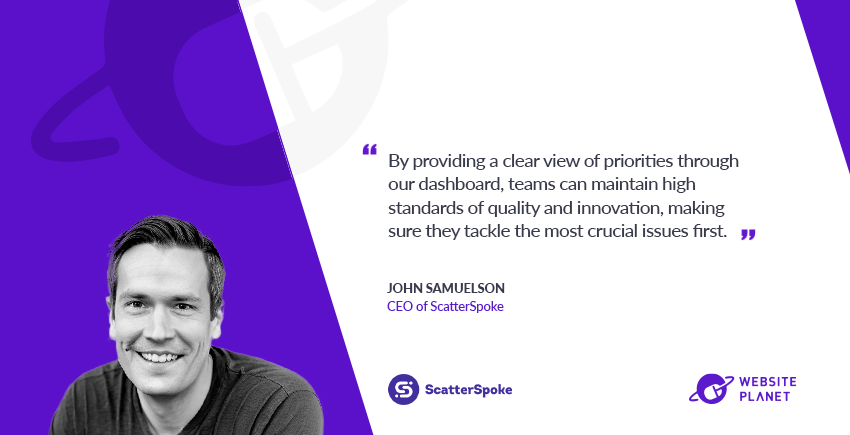Inside this Article
Gender Disparity in Tech Should Matter to Everyone in the UniverseCurrent State of Women in TechnologyImpact of Gender Disparity in TechHelping Women to Rise in TechKey # 1: Graduate More Women With Computer Science Degrees and Certifications Key # 2: Ensure Women Earn Promotions at Comparable Rates as MenKey #3: Revamping the Recruiting & Hiring Process to Attract and Hire Women Who Gets More Responses from Tech Job Applications, Men or Women?Key #4: Equal Pay for Equal WorkKey #5: Encourage Equitable Maternity Policies So Women Feel Secure Taking Leave Key #6: Change the Culture, Change the Perception Incremental Steps Toward a Multifaceted Solution
Gender Disparity in Tech Should Matter to Everyone in the Universe
The fact is that less than one in five employees in the tech industry are women, despite the fact that women make up more than half of the U.S. workforce.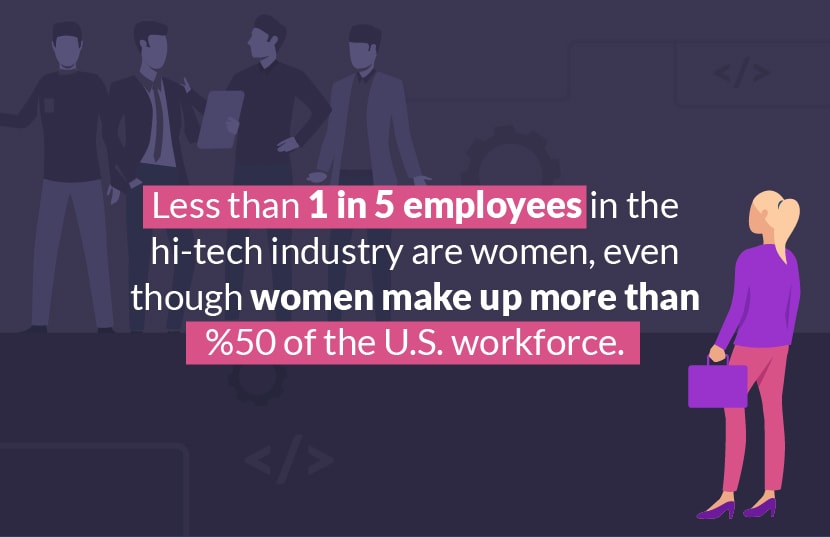 This statistic hurts the economy, companies, women and their families, and every person who uses technology – so pretty much everyone in the universe. But there are many people who are directly in a position to make a significant impact on this reality.
If you are in the tech industry or considering going into the tech industry, this article is written just for you. Every person in the tech industry – not just those in leadership or hiring roles – shares the responsibility and challenge of solving the gender divide in tech. Your words, your actions, and your inactions can make a difference, both positively and negatively.
After holding many different roles in the tech industry (technical writer, project manager, UX designer, content marketing writer), I’ve seen firsthand the impact that the underrepresentation of women has both on the industry and the tech products companies produce. Most importantly, I’ve seen amazingly talented women either leave the tech industry or never go into it because it’s a male-dominated field.
There are tons (and tons and tons) of articles and whitepapers and everything else in between being written about getting more women into the tech industry. But this article is different. Most pieces either focus on only one part of the problem, or they simply provide a general overview of the issue.
But the issue is ginormous! And complex. Writing this article isn’t just a work assignment to me. It’s personal. It’s my career. And it encompasses the majority of my working hours.
Here, we’re going to tackle (almost) everything that goes into the issue of the lack of women in tech: the reasons, the impact, and – most importantly – the solutions. When you finish reading you’ll be armed with real actions that you can take to help solve this regrettable situation – no matter your role.
This statistic hurts the economy, companies, women and their families, and every person who uses technology – so pretty much everyone in the universe. But there are many people who are directly in a position to make a significant impact on this reality.
If you are in the tech industry or considering going into the tech industry, this article is written just for you. Every person in the tech industry – not just those in leadership or hiring roles – shares the responsibility and challenge of solving the gender divide in tech. Your words, your actions, and your inactions can make a difference, both positively and negatively.
After holding many different roles in the tech industry (technical writer, project manager, UX designer, content marketing writer), I’ve seen firsthand the impact that the underrepresentation of women has both on the industry and the tech products companies produce. Most importantly, I’ve seen amazingly talented women either leave the tech industry or never go into it because it’s a male-dominated field.
There are tons (and tons and tons) of articles and whitepapers and everything else in between being written about getting more women into the tech industry. But this article is different. Most pieces either focus on only one part of the problem, or they simply provide a general overview of the issue.
But the issue is ginormous! And complex. Writing this article isn’t just a work assignment to me. It’s personal. It’s my career. And it encompasses the majority of my working hours.
Here, we’re going to tackle (almost) everything that goes into the issue of the lack of women in tech: the reasons, the impact, and – most importantly – the solutions. When you finish reading you’ll be armed with real actions that you can take to help solve this regrettable situation – no matter your role.
Current State of Women in Technology
While researching this article, I was shocked to discover that the percentage of women in tech was actually higher in the 1980s than it is today. And, according to tech leader Judith Spitz, technology is the only STEM career in which the number of women has decreased in the last 20 years. Yes, the number of women has improved very recently. But it’s not enough. It’s not totally the tech companies’ fault that women are underrepresented in technology. Yes, they absolutely hold a fair amount – if not most – of the responsibility. But women must be encouraged by the educational system and welcomed into computer science degree programs to land jobs in tech, and that isn’t currently happening. (We’ll delve into all of this more later.) But even with all the recent publicity and articles and videos and posters, women have only 23% of the tech jobs at Apple and make up only 32% of the company’s workforce. Google has similar stats, with 21% of its tech jobs held by women and 31% of the total workforce. Microsoft is in the same ballpark, with women holding 20% of tech jobs and 27% of the total workforce.
I read a ton of statistics while researching this article. But I think the following paint a very clear picture of where we are today:
- 33% of today’s women in technology have considered switching careers because of the men who are in the industry.
- Women leave the tech industry at a 45% higher rate than men.
- Half of the tech startups have no women on their leadership teams.
Impact of Gender Disparity in Tech
We’ve made progress because people are talking about this issue. And because companies are taking action. But the problem becomes even larger and more complex as technology continues to become a more significant part of our daily lives. The gender disparity in tech is an issue for many more reasons than simple inequality. Here are the biggest reasons why you should care about the gender gap:- Technology is used by women. Technology touches all aspects of our lives, and everyone uses technology. To create the most effective and user-friendly technology we need diversity in thought, perspective, and skills. Women and men often bring different strengths to the table, which means that if women are not represented, neither are their strengths or insights.
- Women are more effective leaders than men. Yes, I have data to back this up. Strengths-based leadership firm Zenger Folkman found that women had a leadership-effective score in technology of 52.1%, compared to 42.0% for men. Interestingly, among the various industries studied, the difference in leadership scores between men and women was the largest in the tech industry.
- Technology offers high-paying professional positions. As more and more jobs involve technology, women who are not interested or qualified in the field reduce their prospects of high-paying positions.
- Self-limiting proposition. The fact that there are fewer women in tech makes many women shy away from the industry, not wanting to be “the only one.” It also means that an unconscious bias may cause a man to hire men, which makes the gap even bigger.
- Higher business results for companies with gender diversity. A McKinsey study found that companies were 21% more likely to have above-average profits if they were in the top quartile in terms of gender diversity among their executives.
Helping Women to Rise in Tech
For this to happen, it takes a lot of small, incremental changes by many different people and organizations. Here are six key changes that need to happen if we are going to see an increase in the percentage of women in technology.Key # 1: Graduate More Women With Computer Science Degrees and Certifications
I saw an initial disparity firsthand, when my own kids were in school. My son was encouraged by his homeroom teacher to take engineering and computer courses as electives. At the same time, my daughter was not only steered toward art and music, but actively discouraged from the high-level math classes. If we are going to solve – or at least improve – the gender disparity issue in technology, we must start by addressing the issues in the educational system.Fewer Women Earn Computer Science Degrees than Men
Former astronaut Dr. Sally Ride said in a New York Times article that girls ages ten to 12 are most susceptible to being pushed off track from STEM fields. My experience mirrors the UNESCO report Cracking the Code: Girls and Women’s Education in STEM, which came to the same conclusion as Dr. Ride, saying girls lose interest in STEM subjects between early and late adolescence – which points to fewer girls taking advanced math and science in upper secondary classrooms.“Girls are often brought up to believe that STEM subjects are ‘masculine’ topics and that female ability in STEM is innately inferior to that of males. While research on biological factors belies any factual basis for such beliefs, they persist and undermine girls’ confidence, interest, and willingness to engage in STEM subjects.”But I do believe this myth is a big part of the reason women don’t choose computer science as a major. Males are much more likely to take AP Computer Science in high school, which earns college credit, than females – 81% compared to 19%. College stats are about the same, where only 17.9% of college students earning computer science degrees are women. Even more concerning is that the number of women going into computer science is actually declining – even with many companies, organizations, and schools putting specific emphasis on increasing the number of women earning computer science degrees. In 1994, 28% of computer science graduates were women – but in 2016, that number had dropped to less than 19%.
Harvey Mudd College Quadruples Number of Women Computer Science Majors
On some college campuses, there are exceptions to this trend. Many schools that are specifically focusing on recruiting more women into computer science programs are seeing results. In the past decade, Harvey Mudd College in Southern California has increased women’s computer science majors from 10% to 55%. But it wasn’t just marketing or other tactics that were responsible for the increase.
The school started by identifying three reasons female students didn’t major in computer science:
And the school set out to actively overcome those obstacles. The first change was to make an intro to computer science class a graduation requirement. The school now offers two different intro courses: one for students with experience and the other for newbies. The school found that this reduces the intimidation factor and increases the confidence of women who never considered computer science as an option for them.
Harvey Mudd College fundamentally changed how they teach computer science, to make it interesting and relevant to both genders. The courses are based on puzzles, graphics, and issues that college students of both genders care about, such as DNA and evolution.
And it worked. Tons of women enjoy the courses and are actively changing their major to computer science. By advocating for other colleges – especially those with top computer science programs – to make similar changes, the national statistics can likely soon mirror Harvey Mudd’s.
- Not thinking they were good at programming
- Assuming they wouldn’t fit into the culture
- Not finding the subject interesting
Understanding the Complicated Reasons for Lack of Women
The educational system, as a whole, needs to take a similar approach as Harvey Mudd, with a focus on younger female students. We as a society need to understand exactly why girls and women aren’t going into computer science courses. And then, of course, take actionable steps to fix the issues – at the age and stage where we can encourage women to make different choices about their career path. Is it a level of interest? Maybe perceived ability? Or perhaps conscious and unconscious peer pressure? Do women not want to be one of only a few in the class? Does the lack of female computer science professors and teachers play a role? Maybe society and family members discourage women from going into computer science? My extensive research and personal experience say it’s all of the above. I think Harvey Mudd’s findings are largely on target, but to address the overall problem, we need to change society’s unconscious bias as well. After reading lots of articles, reports and people’s opinions on these topics, I think that the UNESCO report says it best:“Girls’ disadvantage in STEM is a result of multiple and overlapping factors embedded in both the socialization and learning processes. These include social, cultural and gender norms, which influence the way girls and boys are brought up, learn and interact with parents, family, friends, teachers, and the wider community. These influences are a powerful force in shaping their identity, beliefs, behavior, and choices.”These findings back up my own experience. Even more than two decades later, I vividly remember the perplexed look in my college friends’ eyes when I told them I was taking a computer science class as an elective. And I have to admit, it was a bit disconcerting to walk into a huge auditorium on the first day and have to actively search for the few other women in the class. And yes, the professor was a male. Experts often point to the low number of role models at the classroom level as a factor in tech’s gender equality issue. Harvard is considered to have a high number of computer science professors at 25%. And even North Carolina State University, which was honored as having the highest percentage of female computer science professors, currently only has 20 female faculty members – out of about 70.
Constantly Proving Your Worth
In case you’re wondering, I never took another computer class after that intro class. I decided not to become a programmer after that experience, but instead pursue technical writing in the technology industry. And yes, I’m sure that the equal number of men and women in my tech writing classes unconsciously played a pretty big role in my decision. Sure, I ultimately went into technology, but many programming and technical positions pay higher than tech writing. Was it because I was in all-male groups for projects in my computer science class? Or the fact that the course seemed to be taught for guys – with sports examples and projects that were more male-interest oriented? Did being the only woman in the computer science lab on many nights make me uncomfortable? Maybe. But I think the biggest reason was that, during those three months, I felt that I constantly had to prove my worth – when talking to the professor, asking computer lab assistants questions, or working on group projects. And no, I don’t think it was my imagination or me just being sensitive. People assumed I was less competent in the subject matter until I proved otherwise; while my male counterparts were assumed competent until they proved otherwise. And unfortunately, after 25 years in the tech industry, I still encounter this very same hurdle almost every single day.Getting More Women in Tech Classrooms
We have to address existing issues in the actual tech field in order to increase the number of women in tech. But honestly, those changes don’t matter if we can’t create a pipeline of educated women who are interested in pursuing a career in technology. Organizations that focus on encouraging girls in technology at a young age are a great start. And by making these groups girls only, the girls feel comfortable and the activities can be specifically designed for girls’ interests.
I have been especially impressed with the work of these three organizations:
- Girls Who Code. This global program offers free summer programs and afterschool clubs to teach girls to code.
- Black Girls Code. With chapters across the country, this organization focuses on teaching computing programming to girls of color ages seven to 17.
- Rails Girls. Girls located in areas without a local chapter of the above groups can head to this online community, which includes an open-source guide to organizing events.
How to Make a Difference
Elementary and middle schools need to play a big role in this shift. By high school and college, many girls have already formed their opinions of both the tech field and their own ability. Here are five things schools can do to help encourage girls to build an interest in entering the tech industry:- Make technology a required course in middle school.
- Add computer programming instruction in elementary school.
- Make sure Career Days and parent speakers include women in tech.
- Educate teachers on unconscious bias against girls in regards to math and technology.
- Offer a technology/computer club for girls.
- Actively encourage any interest in technology.
- Share about female friends and family in the tech field.
- If you work in the tech field, offer to give a tour or bring young girls to an event at your work.
- Mention technology when asking what they want to be when they grow up.
- When talking about school, ask if they are taking computer or technology courses.
Key # 2: Ensure Women Earn Promotions at Comparable Rates as Men
If we are going to eliminate the gender disparity issue in tech, a key factor in retaining women and reducing the disproportionate female attrition rate. According to the National Council for Women in Technology, women quit their jobs in high tech at more than twice the rate (41%) of men (17%). And fixing this attrition rate starts by looking at promotions. I never had a woman manager in a technical role. Yes, I had female managers as a technical writer. But never when I was a part of a group that included programmers and UX designers.An Indeed study found that only about half (53%) of women felt they had the same advancement opportunities as men. That means that the other half felt discriminated against due to their gender when it came to promotions. Not surprisingly, the study also found that 28% of women quit their tech jobs because of the perceived lack of career growth.
In technology, there are typically two career tracks – one for people who want to stay hands-on in programming and tech skills (junior programmer/senior programmer/systems engineer), and another for those who want to move into management and leadership positions (manager/senior manager/CIO).
Because each track is evaluated differently and requires different skills for promotion, I’m going to look at each of them separately.
Women Are Stuck as Junior Programmers Longer than Men
Honestly, I was most concerned by a HackerRank survey that found women over 35 are 3.5 times more likely than men to be in a junior programmer position at the same age. And between the ages of 24 and 35, 74% of men had been promoted to senior developer – compared to only 54% of women. To me, the promotion numbers to senior developers are more concerning than the leadership numbers. In my experience, many programmers do not want to move into leadership positions, which require the management of people and office politics. Instead, they want the ability to tackle more difficult and high-profile programming projects – and make more money while they’re at it. This makes the promotion track through the technical positions exceptionally important for career growth and salary.Women CIOs Are Becoming More Common
I found a bright spot in terms of women in tech while combing through statistics: Deloitte’s report “Smashing IT’s Glass Ceiling: Perspectives from Leading Women CIOs.” There are more women CIOs in the Fortune 500 than women CFOs and CEOs combined. While 19% of women CIOs sounded low when I first read the number, compared to the overall percentage of women in tech (around 20%), this stat is a positive sign. Especially when you consider that women only make up 12% of CFOs and 5% of CEOs. Other reports have a slightly different perspective. The Indeed study found a decline of women in senior leadership positions. And Equilar found that tech boards have only 14.3% women, which is low in general, but it’s even lower than the average of all Russell 3000 companies, which is 16.2% women. There are many leadership positions at the middle management level that offer good salary opportunities for women, but the stats on management promotion are concerning. While not specific to technology (but technology companies were included), the Leanin.org study found that men hold 62% of managerial positions, while women hold only 38%.How Getting a Job Because I Am a Woman Hurt My Confidence
My own experience with promotions in technology is rather different than the stats I found, but was still as damning to my morale. At age 24, I was called into the senior manager’s office. His department was my internal client, meaning that I technically reported to another manager but my job was to handle his department’s tech writing needs. He told me that he was about to get into trouble because he had no women in his department, and he wanted to hire me for whatever job I wanted. Here’s the kicker – he said the reason was that I was the only woman his guys were willing to work with. At the time, I was thrilled – I got a raise, a new computer, a great job as a project manager, and I negotiated expensive training for a project manager certification. But over the years, it’s really sunk in that I got the job simply because I was a woman. He never once mentioned my skills or work. And whether true or not, the message I took away was that my work was substandard to men’s, and my gender was my main redeeming quality. And now that I have the wisdom of middle age, I have to wonder, did the men in the department knew I only got the position because I was a woman? Did that impact how they viewed me? It’s highly likely. And was the cold shoulder from a male in the department with more experience than me who wanted the job I landed justified? Probably. Women need to get jobs based on their performance, skills, and experience. They shouldn’t get jobs – or not get jobs – simply because of their gender. It’s not fair to the men. It’s not fair to the women. It’s not fair to the teams. And it’s not fair to the company.How to Make a Difference
The solutions to this problem aren’t new and earth-shattering ideas. Really, it’s making sure that basic best practices are in place and followed. It comes down to transparency, training, and communication throughout the process. However, it’s important to note that what is good for women in terms of promotions is actually good for everybody. Many of our suggestions should be implemented across the board. Here are key ways to change the tech sector promotion process:- Be clear about career paths. This information should be transparent and made available to all employees. It should include the specific skills/experiences that are required to move up the ladder.
- Help individuals achieve their goals. Create a personalized career path for each employee based on their own strengths and goals. Have employees update the path with their manager on a regular basis.
- Develop a mentoring program for women in the tech industry. This should include training for the mentors to help guide their mentees through meeting their career goals.
- Offer leadership training to high-performing employees to help meet skills gaps. Instead of requiring nominations or women to sign up, have managers specifically ask all employees individually about their interest in participating. Many women wait to be asked for leadership training opportunities. You should also hold managers accountable for training and promotion rates based on gender.
Key #3: Revamping the Recruiting & Hiring Process to Attract and Hire Women
Having to do a presentation with 15-minute preparation time as part of an interview is incredibly nerve-wracking. Add to that being the only woman in the room (and interviewing for the job), presenting in front of eight men who will decide whether you get said job. The sweaty-palms quotient just jumps even higher. Not to mention, the manager forgot to tell me that the dress code was shorts and t-shirts, so I was massively overdressed in my navy blue skirt suit. Yes, this is a true story. Second only to the education issues, the recruiting process likely contributes to (or at least doesn’t help) the underrepresentation of women in tech. Even having worked as the only woman with 40 men once before, the situation almost made me walk out, especially at the inexperienced age of 25. I stuck with it and landed the job. But I know many women who would have turned it down after the interview.Benefits Are a Top Consideration for Women in Tech When Job Hunting
When I started to look for a new job at age 27, I knew that I was hoping to become a mom in the next few years. So flexibility and maternity benefits were at the top of my list, even more important than salary. And I ultimately ended up taking a job mainly because the company offered 12 weeks paid maternity leave (which was high at the time) and unpaid leave of absence for up to three years. Let’s take a look at the top considerations for women and men when job hunting: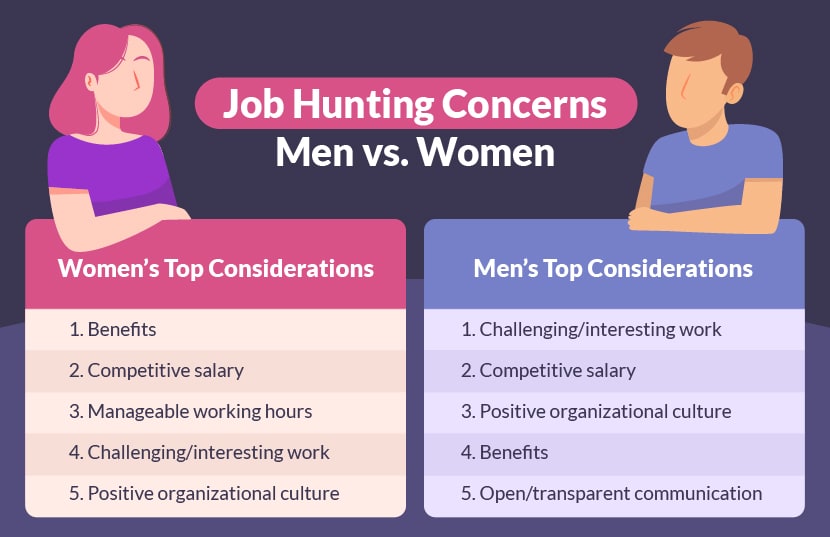 At first glance, you might think the top five are pretty similar for both genders. This is true in one way, but the order is considerably different. So if a man interviews a woman for a job, he might spend most of the time talking about challenging/interesting work – since it’s at the top the list he’s most familiar with.
But that point won’t have the positive impact he may think it will, since it ranks fourth for women. And a man may never even talk about manageable working hours (since it’s #8 for men). But a woman, who puts this in her top three concerns, may assume the hours are unmanageable – simply because the point isn’t addressed.
At first glance, you might think the top five are pretty similar for both genders. This is true in one way, but the order is considerably different. So if a man interviews a woman for a job, he might spend most of the time talking about challenging/interesting work – since it’s at the top the list he’s most familiar with.
But that point won’t have the positive impact he may think it will, since it ranks fourth for women. And a man may never even talk about manageable working hours (since it’s #8 for men). But a woman, who puts this in her top three concerns, may assume the hours are unmanageable – simply because the point isn’t addressed.
Healthcare, Time Off, and Flexibility Matter to Women
A number of my female friends have taken a specific job because they needed health insurance for their families. Maybe their spouse owned his own business, was a freelancer, or just had crappy benefits at his own job. So I wasn’t surprised to find that a Harvard Business Review survey found that 61% of women said they take better health, vision, and dental insurance into consideration when job hunting. I wasn’t, however, expecting that less than half (47%) of men feel this same way. It makes sense to me that the rest of the top five considerations for women in this particular study were all about flexibility – working from home (55%), more flexible hours (47%), unlimited vacation (47%), and more vacation time (40%). Men had the same top five, but working at home was much less of a consideration, with only 40% ranking it as a consideration. I checked out the HackerRank Women in Tech Report 2019 to see if women in tech have similar priorities. The top priority noted in this study was different – professional growth and learning, with 70% of women over 22 years old ranking this as something they look for in a job. But, not surprisingly, 67% of women over 22 ranked work-life balance as a key priority, as well.How to Make a Difference
Here are three ways to use benefits to encourage women to consider and apply for tech jobs:- Include women in the interview process. I know I never wanted to ask a male interviewer about flexibility, and I’d be more likely to voice this question with a female.
- Highlight flexibility options and work-life balance. Women (and men) often research a company’s benefits before applying and may not want to ask this question during an interview, so make sure it’s included on your website.
- Feature women in tech positions on your Careers page. You should also consider having female employees share their experiences, particularly when it comes to work-life balance benefits.
Job Ads: No, Women Don’t Want to Be a Ninja
The recruiting process usually starts with a job applicant reading a job ad – either on a recruiting site or the company’s own site. The person then decides if the job is one they would be interested in, as well as one they would be likely to land.However, the Undercover Recruiter found that while women are influenced by job ads containing gendered language, it does not impact men’s decision to apply or not. The study found that women are likely to pass on applying if they see the words “assertive,” “independent,” and “aggressive,” but are more likely to throw their name into the ring if the ad contains words such as “dedicated” and “responsible.”
Harvard Business School (HBS) specifically called out the words “ninja” and “dominate,” which have dramatically risen in popularity in recent years. HBS surmised (correctly, in my opinion) that these words do not typically appeal to most women. And that because the words are deemed to be masculine in essence, women are going to be less likely to apply for a position where the ideal applicant is touted as a ninja.
In addition, The Undercover Recruiter found that the list of qualifications in the job ad can have a significant impact on who applies. If men see a job they want, they will apply – even if they only have 60% of the requirements. But women are much likely to self-select out of applying. Women tend to only apply if they have 100% of the skills and personality traits listed in the ad.
Iris Bohnet, a visiting professor at HBS, co-chair of Harvard’s Behavioral Insights Group, and director of the Women and Public Policy Program at Harvard Kennedy School, says that job ads are often created by a committee, which means everything that everyone wants to include is added. In reality, much of the job description is a wish list.
How to Make a Difference
Here are four ways to create job ads that will encourage women applicants:- Have a diverse team create job descriptions. Including committee members of both genders will help limit any gendered language. You should also include reviewers of different cultures and age ranges.
- Use the free Gender Decoder for Jobs Ads. This tool evaluates a job posting to tell you if the language leans toward men or women. It’s powered by a list of gendered words from this Duke/Waterloo study.
- Limit the qualifications listed in job ads to only true requirements. The shorter and more focused your list, the more likely that women will view themselves as qualified and apply.
- Include benefits that appeal to women. We’ve already discussed just how important certain benefits are to women. Make sure that your job descriptions highlight perks such as flexibility, healthcare, and professional development.
Who Gets More Responses from Tech Job Applications, Men or Women?
I’ve talked to other women in tech, and I’ve scoured lots of studies for information, but there really is no substitute for conducting our own survey. Instead of relying on anecdotes or a gut feeling, we set out to test actual responses to job inquiries. And the results… well, let’s just say they weren’t what we were expecting at all.Research Hypothesis
Going into this, our assumption is that men were going to get more positive responses to job applications than women. We created six fictional CVs with the same education level and employment background. This included a male and female from each of three ethnic groups: Caucasian, African American, and Latino. To keep track of the responses, we set up a phone number and email account for each CV. Because regional differences may matter, we performed our experiment in three different cities – the Washington D.C. area, Boston/Cambridge, Massachusetts, and Omaha, Nebraska. Since the first two are more liberal, we purposely included a conservative area as well. Next, we researched 100 high-tech related positions in each location and sent all the CVs to every position. To make sure we weren’t replying to outdated posts, we applied within three days of each original listing. Then we sat back and waited. Okay, we weren’t just sitting around doing nothing – we were tracking all the responses for each job and CV. After three weeks, we had a ton of data to analyze.The Results
After three weeks, we tallied the responses. The results were quite surprising. Women received 55.4% of all total positive responses, while men received 44.6% of positive responses. Women had 47% of the negative responses, while men had 53%.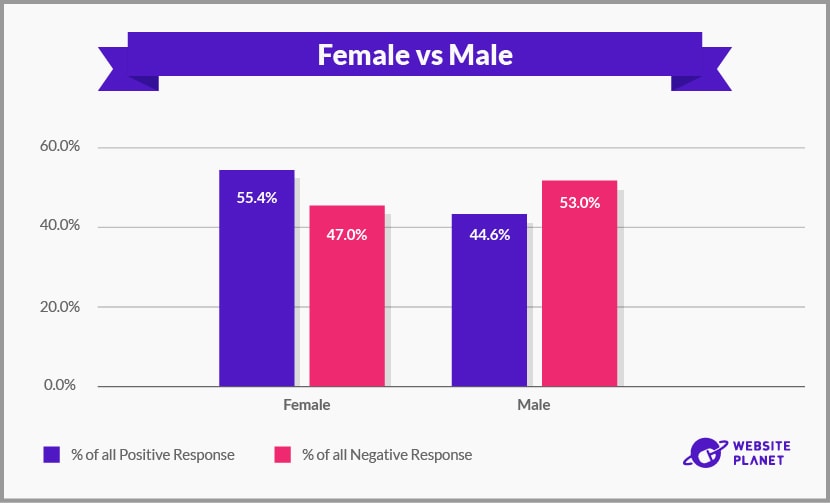 This trend applied regardless of location; women received more positive responses than men in every city.
Of the total positive responses, 21% went to women in Boston/Cambridge (16.3% went to men in this area). Our female CVs in Omaha received 18.8% of the total positive responses (vs. male CVs, which accounted for 17.4%). And women applying to jobs in Washington D.C. accounted for 15.6% of the total positive responses (their male counterparts only accounted for 10.9%).
This trend applied regardless of location; women received more positive responses than men in every city.
Of the total positive responses, 21% went to women in Boston/Cambridge (16.3% went to men in this area). Our female CVs in Omaha received 18.8% of the total positive responses (vs. male CVs, which accounted for 17.4%). And women applying to jobs in Washington D.C. accounted for 15.6% of the total positive responses (their male counterparts only accounted for 10.9%).
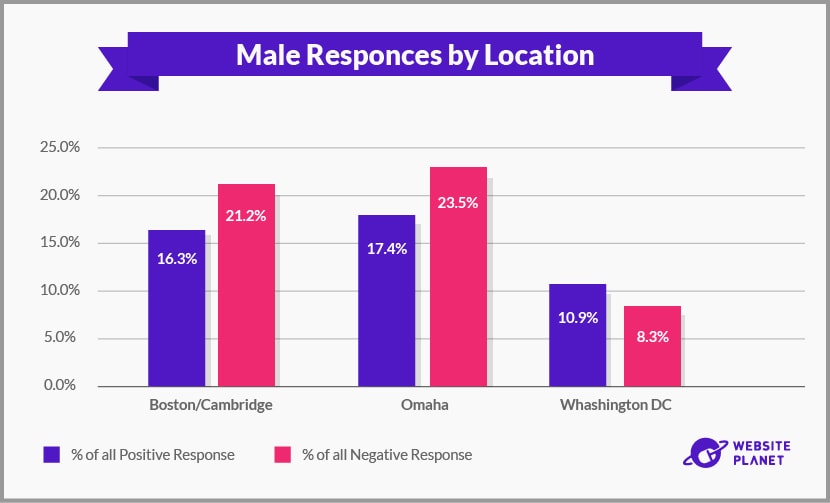
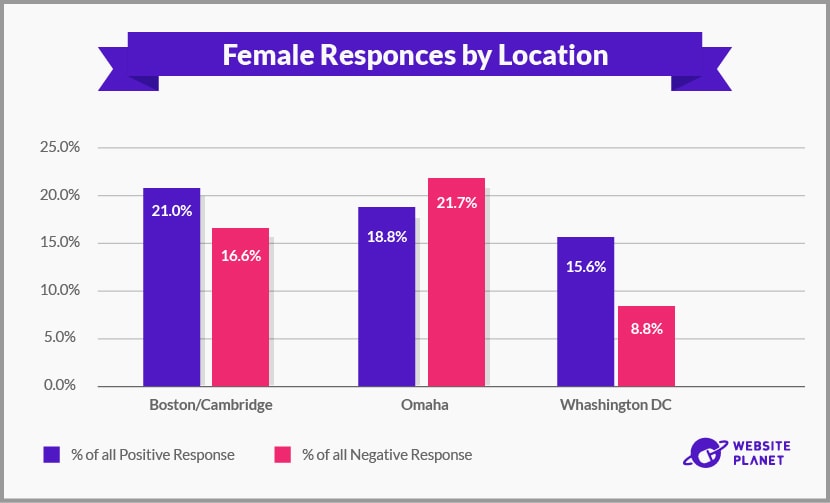 We were a bit shocked (but happily surprised) that our hypothesis was so off base. Women not only got more responses overall, but the responses were more positive than what their male counterparts received.
We were a bit shocked (but happily surprised) that our hypothesis was so off base. Women not only got more responses overall, but the responses were more positive than what their male counterparts received.
What Can We Learn from This?
At first, I was surprised by the results because I had always assumed that, overall, job hunting is easier for men than women. But once I stepped back and started to really ponder it, I realized that the results actually mirror my own experience as a woman looking for both freelance and full-time positions in the technology field. Every time in my career that I brushed off my resume and hit the virtual pavement, I landed a great job for myself in a relatively short amount of time. And, as a female freelancer, I’ve honestly had no issues getting gigs and have been earning over six figures for the past five years. Yes, I have strong credentials – I worked full-time at both IBM and a top accounting firm – and I’ve freelanced for many tech companies that are household names. I don’t think my experience would be the same without this background. But my gut feeling has always been that companies want to hire individuals who are qualified for the position. The gender-related issues that I’ve had all came after being hired. For me, the takeaway from this study is that companies are actively looking to increase the number of women in technical positions. And that qualified women are, at the very least, on an even playing field – and could even have an advantage. It shows that companies are listening to our concerns as women. And, more importantly, they’re actively working to change the representation in their workplaces.Further Testing
This was a limited and basic study, but it gave us a lot to consider. More importantly, we now have the groundwork to expand and further test this revised hypothesis. I think it would be interesting to conduct the same experiment using more cities (maybe seven or eight) – to see if the results are the same. I think this expanded study should include a few big tech cities, notably San Jose, Seattle, and Austin. While Boston is known for its tech firms, these three cities are where many of the big-name companies are located. We could also test the same hypotheses in tech capitals around the world, such as Beijing, Amsterdam, and Tel Aviv. This could help us discern whether the gender divide is a global issue, or something more culturally-based. Finally, ageism affects many workplaces. It would be interesting to test the effect of age on hireability in the tech world – specifically as it relates to gender differences.The Role Interviews Play in Women Getting and Accepting Jobs in Tech
Job interviews are a two-way street – the employer deciding if they want to hire the candidate, and the interviewee deciding if they want to spend the majority of their waking hours at the company. While it goes without saying that applicants should be made to feel comfortable and welcome during this process, this is even more important when a woman is going to be one of the few females in the department.Addressing the Elephant in the Room
At one job interview, I was asked how I would feel about being one of the only women on the team. I was taken aback, not quite sure how to answer – and, to be honest, the question itself made me uncomfortable. I was offered the job, but turned it down. However, I accepted another position where another female in the department took me out to lunch during the interview and was open to me asking her the same question. On the flip side, I was asked to be a part of every interview at one company where I was the only female in the department. No, I wasn’t offended; I thought it was important. And I understood. That said, I think a woman should be part of every interview process for a female candidate. And I am pretty sure that most (if not all) women in tech would agree with me.Can Interview Questions Increase the Gender Gap?
One of the statistics that surprised me the most while researching this story was from a Stanford University study. Of the senior women in tech who were surveyed, 75% said that they have been asked during interviews about marital status, kids, and family life. It shouldn’t surprise me, because it’s also happened to me. But I really hoped that I was just unlucky. Changing the interview process can make a difference in the gender disparity problem. Interestingly, Slack increased the number of women in technical roles by 5% after revamping their interview process. Yes, on the surface that may seem small. But it brought the percent of women up to 34% in technical roles, compared to 19-20% at Microsoft, Facebook, and Google.Instead of doing the whiteboard interview, where applicants have to solve a coding problem on a whiteboard (often with an audience), Slack moved to a blind code review. In this interview format, applicants submit code samples that a committee reviews without knowing the name (or gender) of the candidate.
The company also looked at the skills required for each position and created behavior questions designed to evaluate each one. Most importantly, Slack provided interview training and mock interviews with everyone involved in the hiring process.
Another concern with the traditional interview process is that men are often the ones interviewing women in the tech field. A University of California study found that men are harder on women than they are on men during interviews, which could result in fewer women being hired. While the study was done in the academic field, I believe the results are applicable to the tech industry as well, since both fields are male-dominated.
How to Make a Difference
You can’t get a woman into a tech job without an interview. In all the stories, news segments, and surveys on women in tech that I reviewed for this piece, I found that interviews was one of the areas that was least focused on. Yet, I think one of the keys to increasing women in tech is focusing on the interview process. Here are four ways companies can improve the interview process:- Make sure a woman is part of every interview process. This is especially important when it comes to female job candidates. This will help ensure a broader evaluation of interviewees, as well as contribute to the development of a more diverse company culture.
- Provide interview training. This should include types of questions to ask, key points to share about the job, and how to evaluate candidates. All managers should receive this training, as well as any other employee involved in the interview process.
- Give female candidates a more informal opportunity. This could be as simple as lunch or coffee in the breakroom. The goal is for the female candidate to talk with another female in a technical role. This provides an opportunity for a more honest and open conversation that may lead to the woman accepting your position.
- Evaluate skills with a blind review. Eliminate presentations or solving code problems on a whiteboard in front of a group. Instead, have a group evaluate the work of applicants without knowing their name or gender. This will help eliminate any implicit or explicit bias.
Key #4: Equal Pay for Equal Work
We can’t solve – or even improve – the gender disparity in tech without looking at the salary gap issue. Yes, this exists in other industries as well, but its impacts compound with the bigger issues in tech. There is, however, some great news – for the past two years, Hired (a job search marketplace) found the pay gap in tech to be 4%, but their 2019 study found that the gap dropped to 3%. However, until the pay gap is totally gone, it adds to women feeling undervalued in the tech industry – which leads to many women leaving the tech industry altogether. Interestingly, the pay gap varies based on the type of job. Computer programmers have the largest pay gap, with about an 11% difference between men and women. For me, the most concerning finding was that the pay gap actually increases as women gain more experience. Hired found that the gap was 2% for women with zero to two years of experience, but jumped to 5% after 15 years of experience.Why Is There a Gap?
It’s not just one thing, but several factors combined that make up the lower pay for women in tech. And yes, these are the reasons for the pay gap across the board, not just in tech.- Women are less likely to negotiate. Glassdoor found that 68% of women accept the salaries they are offered instead of negotiating, compared to 52% of men.
- Women are offered lower salaries. Yes, this happens. Yes, it’s likely illegal. Yes, it has to stop. The good news is that women are earning 3% less than men compared to 4% last year. The bad news is that Hispanic women were offered 91 cents per dollar compared to men for the same job and Black women fared even worse at 89 cents.
- Women are less likely to receive raises. Women who asked for raises were granted increased pay only 15% of the time, instead of 20% of men’s raise requests, found Harvard Business Review.
How to Make a Difference
Little changes add up. And women have to take responsibility for changing our behaviors that contribute to this gap. Here are some ways to start:- Companies need to provide more pay transparency. Several large companies I worked with had defined pay grades that were tied to specific positions. Yes, there was some discretion (especially in terms of raises), but it eliminated many issues.
- Women should negotiate salary offers. We need to realize that most employers put the first number out expecting a negotiation. You won’t offend anyone or look bad by asking for more. If anything, you look less professional and driven when you don’t attempt negotiation. And yes, I’m saying this partly to remind myself, since my default, even as a freelancer, is to accept the first offer.
- Everyone should encourage women to negotiate. This goes for men, other women, managers, professors, parents, friends, husbands. Remind the women you know that they can and should negotiate. Offer to practice negotiating with them.
- Women need to research salaries. Instead of taking what’s offered – and I’m guilty of this myself – women need to proactively know the range for their positions and even at the specific company. With sites like Payscale and Glassdoor, there isn’t any excuse for not coming to the discussion armed with information.
- Remove the silence. It’s definitely frowned upon to talk about your salary – and some employers expressively prohibit it. But at my first tech job I found out through a happy hour conversation that new hires were being brought in at a higher salary than I was making. And thanks to my dad’s encouragement, I went to the manager and got an adjustment. But if the beer and wine hadn’t loosened my co-workers’ lips, I never would have known.
- Require employers to report pay gaps. An interesting idea was suggested by panelists at the Inclusion By Design: Equal Pay Day conference in New York City: Employers should be required to submit data about pay gaps, and the federal government need to hold employers with gaps responsible.
Key #5: Encourage Equitable Maternity Policies So Women Feel Secure Taking Leave
Maternity leaves aren’t new or exclusive to the tech field. But because (on average) only one in five tech employees are women, her absence stands out. This means that maternity leaves are more likely to be a roadblock for career growth for women in tech than in other industries where the percentage of employees taking maternity leave is higher.Common Maternity Leave Issues Women in Tech Face
Often, women in tech have smooth maternity leaves. But sometimes they don’t. And a poor experience at this important time can impact their whole career path and desire to continue in the tech industry. Unfortunately, the following situations are all too common:- Lack of precedent or process. When a female colleague (who was hired after me) became pregnant, she was the first person in the department to ever have a baby. The men in the department whose wives had babies typically took a few days off and were back on Monday morning.
- Loss of projects or even jobs. I know more than one woman who lost her job while on maternity leave. A particularly troubling tale involved a colleague whose male boss replaced her with an under-qualified male friend of his. And the version of the story where a woman is taken off high profile projects when they return is one I’ve heard many times over.
- Pressure to cut their leave short. The woman across the hall from me at one job (in another department) came back three weeks before her leave was up because her manager asked her to get a project release out the door. In my research, I was shocked to find out that this situation is pretty common.
- Poor experience as a new mom when returning. Leaving your little one and returning to work is a stressful time for many new parents. And one in four women said they had a really poor experience as a new mom working in tech.
What Tech Is Getting Right With Maternity Leaves
We do have to acknowledge that some companies – especially the larger tech giants – have improved leave and offers of flexibility. This makes a big difference to retaining women in the tech industry after they have a baby. And this trend makes us hopeful.- Generous maternity leave at some companies. IBM, Microsoft, and Amazon offer 20 weeks of paid leave. Adobe moms get 26 weeks, while Google moms get 22 to 24. Especially impressive is Redditt’s 16 weeks of paid leave plus four additional months of disability leave that can be used at any time – even split up – during the year after birth. And I benefited from this type of offering firsthand, taking three years leave of absence from a large tech company when each of my kids were born.
- Increased paternity leave. Back when my kids were born, dads got a week paid – and that was considered generous. But now, fathers at Redditt and Adobe can take up to 16 weeks. And proud papas at Microsoft, IBM, and Google get 12 weeks off.
- Flexibility to work from home. Many tech companies are more liberal with work-at-home policies than companies in other industries. Even 18 years ago, I was able to work at home twice a week while pregnant, eliminating a long commute on those days. According to Recode, 41% of women in tech who were surveyed ranked flexibility to work from home as a five out of five in terms of importance.
How to Make a Difference
Here are ways to improve maternity leave policies and experience in the tech industry:- Make leave equitable for men and women vs. gendered policies. Etsy is a great example of this, with 26 weeks leave offered to all new parents.
- Create a culture where men actually take paternity leave. It’s great to offer paternity leave, but it only provides real benefits if the men feel they can actually take the leave. Encourage employees at all levels to take their paternity leave to demonstrate that it’s not career limiting to take time off to spend with your newborn.
- Provide clean and private lactation rooms. I shuddered when I read about women nursing or pumping in server rooms and closets. Being able to pump breast milk is key for women returning to work and feeling accepted in their role as a new mom. Kudos to the companies that are providing dedicated, welcoming, and private (of course) places to nurse. Everyone else needs to get on the ball – and quickly.
- Offer mentoring programs for women returning to work. It’s a challenging time – believe me. And by getting firsthand advice from someone who has recently navigated the same journey, women will feel supported and be less likely to leave.
- Include the option of a phased return. Harvard Business Review recommends letting new mothers gradually return to a full-time schedule and workload. The programmer who worked across the hall from me took this option, and she found it helpful to ease back. She started with two days a week, and then after a month added another day each week. By doing so, the company was able to retain (and support) a great employee.
Key #6: Change the Culture, Change the Perception
I was recently interviewing a top technical expert at a leading tech company, with six men and one other woman on the phone. I had asked several technical questions with appropriate follow up. But while the expert was answering (and I was 100% understanding what he was talking about), another man interrupted and said, “Keep it simple, remember we have the PR gals on the phone.” Yes, that happened. And it’s just the most recent example that I have about how women in tech are often perceived as being less capable than men. Pretty much every woman in technology has been asked many times to take notes in meetings. Simply because we were the only female in the room. The first time I was asked, I did it. Then another female took me aside after the meeting and said that it devalues us – and to forget my pen and paper next time so I had an excuse. And I can’t write about this topic without mentioning the widely circulated memo from a Google engineer saying that women are underrepresented in tech because of biological differences and men’s higher drive for status. Of course, he was fired. But it still happened. And it made women wonder how many other men think the same. I have indeed worked with many men who have treated me as an equal. And I absolutely think that it’s gotten better since I joined the workforce in the mid-1990s. But the culture is still a problem that I think is both a symptom and a contributing reason for the underrepresentation of women in tech.Role of Culture in the Perception of Women
The Atlantic’s video “How Did Tech Become So Male-Dominated?” bluntly says that men reject women from computer jobs because women aren’t “a culture fit.” But that reasoning is really just a code for saying male programmers can’t socialize with women. This is a pretty bold statement, but the bottom line is that you can’t talk about this issue without discussing the role that culture plays. I honestly think that the male culture is largely a result of the field being male-dominated and that many of the cultural issues would fix themselves if the gender percentage were more equal. But I also have seen first-hand how this culture leads to women being undervalued. And I don’t think we can increase the number of women in tech without addressing the current culture issue.Role of Informal Socialization – Lunches, Happy Hours, and Office Parties, Oh My!
Many business relationships aren’t formed during meetings, but through activities where you get to know one another as people – lunches, happy hours, office parties, etc. But if you are one of the only women on the team or in the company, you may not be invited – or feel comfortable once you’re there. Or – especially if the activity is geared toward men – the invitation simply may not interest you. At one of my jobs, everyone in my department went to lunch together every Monday. And the restaurant was always this super greasy pizza joint that had nary a salad or anything other than pizza on the menu. I feel positive that if there were more women in the department that the lunch spot would have included at least one healthy option. And then there’s the sticky situation of happy hours. As the only female in the department, do you go? What if you are excluded? What if after a couple of beers, someone says something inappropriate. It was a puzzle I never quite figured out until another woman joined. And then it was a two-for-one deal: either both of us went or neither of us. Culture doesn’t change overnight. But some big changes have already happened, and more will follow. And women will more likely consider tech because they feel that the culture will become more welcoming. At least that is what I and the tech companies investing all this money into initiatives are hoping. Lori Wright, General Manager of Workplace Collaboration at Microsoft, summed up the impact of culture on the issue in a Forbes interview:“I believe women will only work and stay in tech if they feel welcomed and have a voice. Women need to see tech as a place where they can belong. And tech needs to work hard to help women belong because, otherwise, companies will offer products that only represent half of the population.”
How to Make a Difference
Here are ways to improve the culture and perception of women in the tech industry:
- Encourage the conversation. Change starts by talking about it. It’s not a secret that tech is male-dominated. Start an honest conversation with team members and listen to their thoughts. Get ideas and hear concerns.
- Plan outings and social events that are of interest to both genders. Instead of golf for the end of project reward day, opt for bowling. And plan the happy hour to celebrate a big milestone at a location where both genders will feel comfortable. Even better, run the plans by a woman (or three) in the department.
- Train managers on inclusiveness and gender sensitivity. Require all managers to attend training that increases awareness of gender issues and how to create an inclusive environment. Encourage departments to share ideas and tips.
- Make it safe and supportive for women to speak out. Change happens when women feel it’s OK to say, no, I don’t want to take notes. Or let’s go somewhere else for the team outing. And even more, safe to speak out if discrimination or harassment happens.






